 W
WRichard Bache, born in Settle, West Riding of Yorkshire, England, immigrated to Philadelphia, in the colony of Pennsylvania, where he was a businessman, a marine insurance underwriter, and later served as Postmaster-General of the American Post Office. He also was the son-in-law of Benjamin Franklin.
 W
WSarah "Sally" Franklin Bache was the daughter of Benjamin Franklin and Deborah Read. She was a leader in relief work during the American Revolutionary War and frequently served as her father's political hostess, like her mother before her death in 1774. Sarah was also an important leader for women in the pro-independence effort in Philadelphia. She was an active member of the community until her death in 1808.
 W
WThomas Barclay was a Philadelphia merchant, America's first consul in France (1781–1787) and the American diplomat who negotiated the United States of America's first treaty with the sultan of Morocco in 1786. He was the first American diplomat to die in a foreign country in the service of the United States.
 W
WJohn Barry was an Irish-American officer in the Continental Navy during the American Revolutionary War and later in the United States Navy. He has been credited as "The Father of the American Navy" and was appointed a captain in the Continental Navy on December 7, 1775. He was the first captain placed in command of a U.S. warship commissioned for service under the Continental flag.
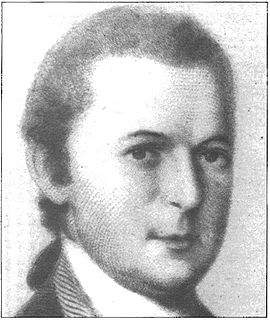 W
WColonel Clement Biddle was an American Revolutionary War soldier.
 W
WNicholas Biddle was one of the first five captains of the Continental Navy, which was raised by the Continental Congress during the American Revolutionary War. Biddle was born in Philadelphia in 1750. He began sailing at the age of 13 and joined the Royal Navy when he was 20. In 1773, he sailed the Arctic with Constantine Phipps and Horatio Nelson. When the Revolutionary War began in 1775, Biddle joined the Continental Navy and commanded several ships. In 1778 off the coast of Barbados, Biddle confronted HMS Yarmouth, a 64-gun British warship. After a twenty-minute battle, Biddle's ship Randolph suddenly exploded, killing him and most of his men. Four ships of the U.S. Navy have been named in his honor.
 W
WMartin Brechall was an American fraktur artist.
 W
WGeorge Bryan was an Irish/American Pennsylvania businessman, and politician of the Revolutionary era. He served as the first Vice-President of Pennsylvania and its second President (Governor) following the Declaration of Independence from Great Britain. He was an early abolitionist and sponsored the bill which helped bring about abolition in Philadelphia. He also served as a judge of the Pennsylvania Supreme Court.
 W
WJames Burd was a colonial American soldier in the French and Indian War, during which he played an important role in fortifying the Pennsylvania frontier.
 W
WWilliam Cannon was among the first pioneers in the Oregon Country and the only recorded American Revolutionary War soldier buried in Oregon. Cannon voted with the majority in favor of a provisional government.
 W
WThe Captivity of Benjamin Gilbert and His Family, 1780-83 is a captivity narrative by William Walton relating the experiences of a Quaker family of settlers near Mauch Chunk in present-day Carbon County, Pennsylvania. The story was originally published in 1784, and has since been republished numerous times under varying titles.
 W
WWilliam Crawford was an American soldier and surveyor who worked as a western land agent for George Washington. Crawford fought in the French and Indian War and the American Revolutionary War. He was tortured and burned at the stake by American Indians in retaliation for the Gnadenhutten massacre, a notorious slaughter of Indians by militia near the end of the American Revolution.
 W
WLydia Darragh was an American woman said to have crossed British lines during the British occupation of Philadelphia, Pennsylvania during the American Revolutionary War, delivering information to George Washington and the Continental Army that warned them of a pending British attack. Contemporary sources claim Darragh's uncorroborated story is historically unsubstantiated.
 W
WEsther de Berdt Reed was active in the American Revolutionary War as a civic leader for soldiers' relief, who formed and led the Ladies Association of Philadelphia to provide aid for George Washington's troops during the war.
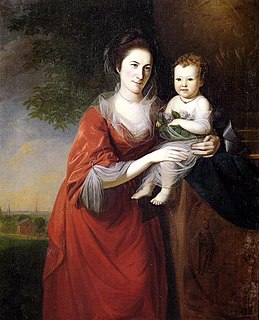 W
WMary "Polly" Norris Dickinson was an early American land and estate owner and manager. She is known for her ownership of one of the largest libraries in the American colonies, her participation in political thought of the time, and her presence in or near events of the Constitutional Convention, including her marriage to Framer John Dickinson, one of the early drafters of the Constitution and one of its signers on behalf of the colony of Delaware. They bequeathed much of their combined library to the first college founded in the new United States. The college was originally named "John and Mary's College", by Benjamin Rush, for Norris Dickinson and her husband and is now called Dickinson College.
 W
WGeorge Duffield was a leading eighteenth-century Presbyterian minister. He was born in Lancaster County, Province of Pennsylvania in 1732. In 1779, Duffield was elected a member of the American Philosophical Society.
 W
WEnoch Edwards was an American physician and a leading Patriot during the American Revolution. Born in Byberry Township, Pennsylvania, Edwards was a member of the Provincial Congress in Carpenters' Hall on June 18, 1776, which led to the Pennsylvania Constitution of 1776. He was also a signatory of the 1790 Pennsylvania Constitution. During the war he served as attending physician for George Washington, was a close friend of both Benjamin Rush and Thomas Jefferson, and kept up correspondence with James Monroe and John Quincy Adams.
 W
WAlexander Ewing was a soldier for the Continental Army during the American Revolutionary War and a colonel in the War of 1812. He later was a founding resident of Fort Wayne, Indiana.
 W
WJehu Eyre or Ayer was an American businessman, veteran of the French and Indian War and American Revolutionary War, and member of the influential Eyre family, which played a major role in the American Revolution and the early Republic. Jehu's father George had emigrated to the New World in 1727; the family was descended from one of the oldest noble lines in England.
 W
WLady Juliana Penn was the English wife of Thomas Penn, and she assisted him in the administration of the Colony of Pennsylvania in his later years. She corresponded with John Adams and other leaders of the early United States.
 W
WTench Francis (1730–1800) was an American merchant, lawyer and agent for the family of William Penn and the first cashier of the Bank of North America.
 W
WJohn Hazelwood served as a Commodore in the Pennsylvania Navy and Continental Navy and was among the most noted naval officers during the American Revolutionary War. Born in England about 1726, he became a mariner and settled in Philadelphia early in life, became married and had several children. Promoted to Commodore during the Philadelphia campaign, he also became commander of Fort Mifflin while it was under siege by the British. Throughout the campaign Hazelwood and General Washington were in frequent communication with letters. During the weeks spent engaging the British navy on the Delaware River Hazelwood innovated many naval tactics, kept the British navy at bay for weeks and played a major role in the development of riverine warfare for the American navies. Recommended by Washington and his council, Hazelwood was chosen to lead a large fleet of American ships and riverboats up river to safety. For his bravery and distinguished service Congress awarded him with a ceremonial military sword, while the famous presidential artist Charles Peale found Hazelwood worthy enough to paint his portrait. After the Revolution Hazelwood lived out his remaining years in Philadelphia.
 W
WEdward "Ned" Hector was an African American soldier who fought in the American Revolutionary War. Hector was one of three to five thousand people of color that fought for the cause of American independence. He served as a teamster and a bombardier with the state militia called Proctor's Third Pennsylvania Artillery, which by the end of 1777 became the Fourth Continental Artillery. The known battles he participated in are the Battle of Brandywine and Germantown. In the Battle of Brandywine he disregarded his orders to abandon everything and retreat. He is remembered for replying to the orders, "The enemy shall not have my team; I will save my horses and myself!"
 W
WWilliam Jones was an American politician.
 W
WFrederick Leaser (1738–1810) was a Pennsylvanian German farmer, patriot and soldier from Lynn Township, Lehigh County, Pennsylvania. He is known for transporting the Liberty Bell to the Zion Reformed Church in Allentown during the American Revolutionary War.
 W
WMichael Leib was an American physician, politician, scientist, inventor, statesman, and philosopher from Pennsylvania. He served Pennsylvania in both houses of the state legislature and represented Pennsylvania in both the U.S. House and the United States Senate.
 W
WThe Reverend William Linn was the second President of Queen's College, serving in a pro tempore capacity from 1791 to 1795. He was also the first Chaplain of the United States House of Representatives.
 W
WBenjamin Loxley, also known as Benjamin Lockley was a prominent Philadelphia carpenter-architect, master builder, investor and military leader in the American Colonial Period. He began his career by working as a carpenter-architect and renting out land outside the city. He then worked as a master builder and built various properties in the city. He invested in many schemes and was the largest stockholder of the Carpenters' Company of the City and County of Philadelphia at one point. He was also a philanthropist and participated in several civil activities.
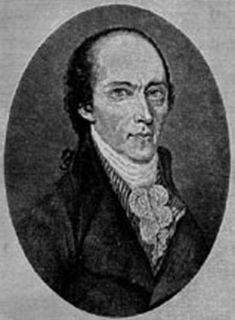 W
WWilliam Maclay was a politician from Pennsylvania during the eighteenth century. Maclay, along with Robert Morris, was a member of Pennsylvania's first two-member delegation to the United States Senate. He assisted John Harris, Sr. with the planning the layout of Harrisburg, Pennsylvania in 1785, where Maclay Street is named in his likeness. Following his tenure in the Senate, he served in the Pennsylvania House of Representatives on two occasions, as a county judge, and as a presidential elector. He is known for his journal providing historical information on the 1st United States Congress.
 W
WGeorge Meade was an American merchant from Philadelphia, known for being the grandfather of Civil War general George Gordon Meade. In partnership with Thomas Fitzsimons, his firm was among the largest provision merchants during the American Revolutionary War, and helped finance the Bank of Pennsylvania and Bank of North America during the conflict—while it profited from British goods as well. Meade's business went bankrupt by 1801 due to investments in the Yazoo land scandal, and was continued by his son Richard W. Meade.
 W
WJohn Jacob Mickley (1737–1808) was a farmer and soldier from Whitehall Township, Lehigh County, Pennsylvania known for transporting the Liberty Bell from Philadelphia in September, 1777 during the American Revolutionary War.
 W
WWilliam Moore was a Pennsylvania statesman and politician of the Revolutionary era. He served as Vice-President of Pennsylvania from 1779 to 1781, and then as President from 1781 to 1782.. Moore was the only man formally elected to both offices. He was also a judge, state legislator, director of the Bank of Pennsylvania and trustee of the University of Pennsylvania.
 W
WJohn Morgan, "founder of Public Medical Instruction in America," was co-founder of the Medical College at the University of Pennsylvania, the first medical school in Colonial America; and he served as the second "Chief physician & director general" of the Continental Army. He was an early member of the American Philosophical Society, elected in 1766, where he served as Curator from 1769-1770.
 W
WSamuel Morris was a merchant and Patriot in colonial and revolutionary-era Philadelphia, Pennsylvania.
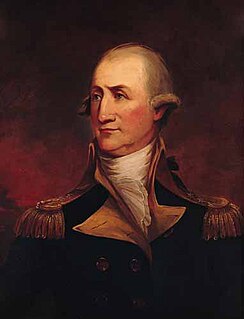 W
WJohn Peter Gabriel Muhlenberg was an American clergyman, Continental Army soldier during the American Revolutionary War, and political figure in the newly independent United States. A Lutheran minister, he served in the United States House of Representatives and United States Senate from Pennsylvania.
 W
WSamuel Nicholas was the first officer commissioned in the United States Continental Marines and by tradition is considered to be the first Commandant of the Marine Corps.
 W
WJohann Henrich Otto was an American fraktur artist.
 W
WJohn Penn was the last governor of colonial Pennsylvania, serving in that office from 1763 to 1771 and from 1773 to 1776. Educated in Britain and Switzerland, he was also one of the Penn family proprietors of the Province of Pennsylvania from 1771 until 1776, holding a one-fourth share, when the creation of the independent Commonwealth of Pennsylvania during the American Revolution removed the Penn family from power.
 W
WElizabeth Willing Powel was an American socialite and a prominent member of the Philadelphia upper class of the late 18th and early 19th centuries. The daughter and later wife of mayors of Philadelphia, she was a salonnière who hosted frequent gatherings that became a staple of political life in the city. During the First Continental Congress in 1774, Powel opened her home to the delegates and their families, hosting dinner parties and other events. After the American Revolutionary War, she again took her place among the most prominent Philadelphian socialites, establishing a salon of the Republican Court of leading intellectuals and political figures.
 W
WElizabeth Griscom Ross, also known by her second and third married names, Ashburn and Claypoole, was an American upholsterer who was credited by her relatives in 1870 with making the first American flag, accordingly known as the Betsy Ross flag. Though most historians dismiss the story, Ross family tradition holds that General George Washington, commander-in-chief of the Continental Army and two members of a congressional committee—Robert Morris and George Ross—visited Mrs. Ross in 1776. Mrs. Ross convinced George Washington to change the shape of the stars in a sketch of a flag he showed her from six-pointed to five-pointed by demonstrating that it was easier and speedier to cut the latter. However, there is no archival evidence or other recorded verbal tradition to substantiate this story of the first American flag. It appears that the story first surfaced in the writings of her grandson in the 1870s, with no mention or documentation in earlier decades.
 W
WHaym Salomon was a Polish-born Jewish businessman and political financial broker who, along with English-born Robert Morris, was a prime financier of the rebel American side during the American Revolutionary War against Great Britain.
 W
WGershom Mendes Seixas was the first native-born Jewish religious leader in the United States. An American Patriot, he served as the hazzan of Congregation Shearith Israel, New York City's first Spanish and Portuguese synagogue, for about five decades. The first American Jewish clergyman to deliver sermons in English, Mendes Seixas became known for his civic activities as well as his defense of religious liberty, participating in the inauguration of President George Washington and helping found King's College, the precursor of New York City's Columbia University.
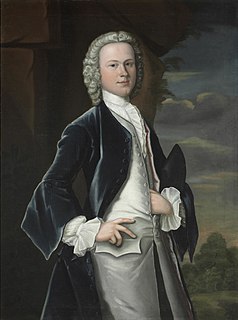 W
WEdward Shippen was an American lawyer, judge, government official, and prominent figure in colonial and post-revolutionary Philadelphia, Pennsylvania.
 W
WWilliam Shippen Jr., was the first systematic teacher of anatomy, surgery and obstetrics in Colonial America and founded the first maternity hospital in America. He was the 3rd Director General of Hospitals of the Continental Army.
 W
WRobert Smith was a Scottish-born American architect who was based in Philadelphia. Smith's work includes buildings such as Carpenters' Hall, St. Peter's Church, and the steeple on Christ Church. These structures constituted the greater part of the city's early skyline. Other works include Nassau Hall at Princeton University and the Public Hospital in Williamsburg, Virginia. He worked exclusively in the Georgian style.
 W
WChristopher Sower was a clergyman and printer.
 W
WCharles Thomson was an Irish-born Patriot leader in Philadelphia during the American Revolution, and the secretary of the Continental Congress (1774–1789) throughout its existence.
 W
WMajor Moses Van Campen (1757–1849) was a soldier during the American Revolutionary War. He was a prominent figure in Pennsylvania and parts of New York. His primary involvement in the Revolutionary War was in fighting against hostile Native American tribes. He began work as a soldier in 1775 and retired from military service in 1783. Van Campen was familiar with Native American methods of warfare. He also participated in the Sullivan Expedition in 1779.
 W
WCaptain Samuel Van Leer (1747–1825) was a well known Pennsylvania Irons works owner and a United States Army officer. On outset of the American Revolutionary War, he started a military career with enthusiasm with his neighbor Anthony Wayne in 1775. His furnace supplied cannon and cannonballs for the Revolutionary Army.
 W
WAnthony Wayne was an American soldier, officer and statesman of Irish descent. He adopted a military career at the outset of the American Revolutionary War, where his military exploits and fiery personality quickly earned him promotion to brigadier general and the nickname "Mad Anthony". He later served as the Senior Officer of the Army on the Ohio Country frontier and led the Legion of the United States.
 W
WSamuel Wharton was a merchant, land speculator, and politician from Dover in Kent County, Delaware. John Bayton, George Morgan, and George Croghan, deputy superintendent of Indian affairs, joined in a partnership on the Ohio country and Indian Trade after 1763. Though the various colonies laid claim to parts of it after the French and Indian War, the Treaty of Paris gave control of the entire Ohio region to Great Britain of Wharton and their business operation. During the American Revolution, he served as a delegate to the Continental Congress from Delaware.
 W
WThomas Wharton Jr. was a Pennsylvania merchant and politician of the Revolutionary era. He served as the first President of Pennsylvania following the Declaration of Independence from Great Britain and he started the history of the United States of America.
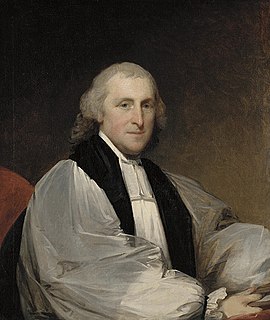 W
WWilliam White was the first and fourth Presiding Bishop of the Episcopal Church of the United States, the first bishop of the Diocese of Pennsylvania (1787–1836), and the second United States Senate Chaplain. He also served as the first and fourth President of the House of Deputies for the General Convention of the Episcopal Church.
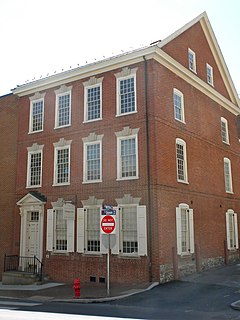 W
WJasper Yeates (1745–1817) was an American lawyer and judge from Pennsylvania, a justice of the state Supreme Court from 1791 to 1817.